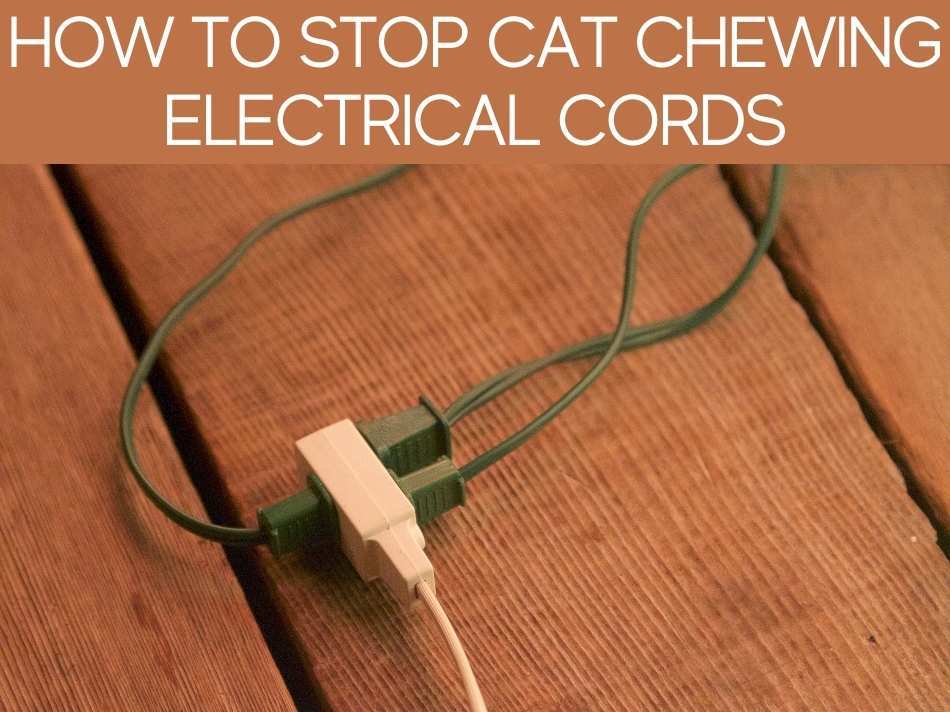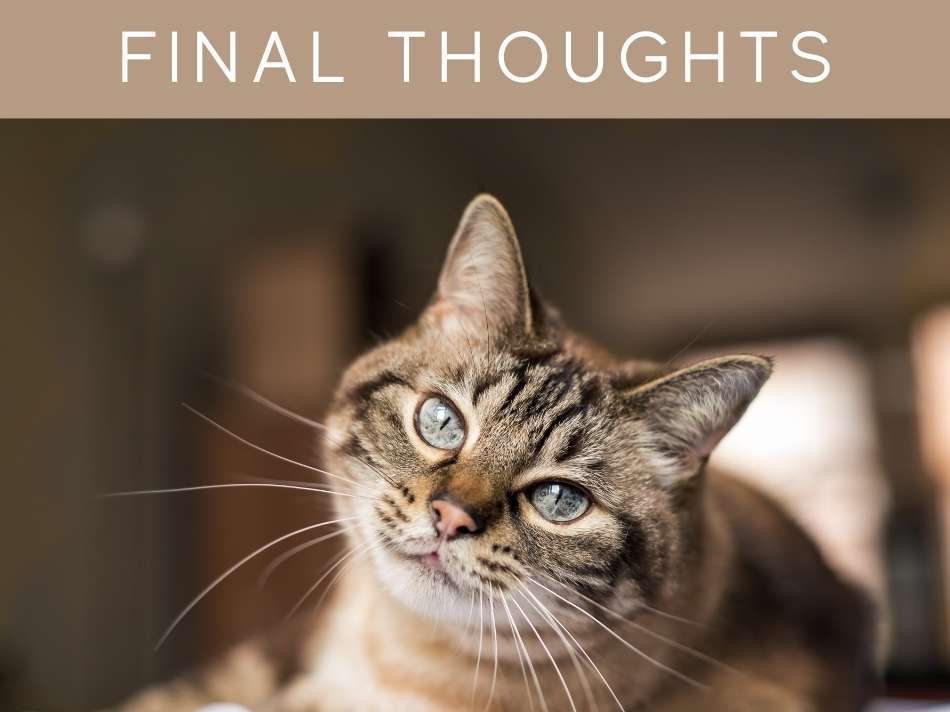Cats are curious–and sometimes mischievous–creatures, and as LED lights become more common, it’s natural to wonder whether LEDs are safe for cats.
LED lights are generally safe for cats, & have not been shown to cause adverse effects. However, extended exposure to blue light can disrupt circadian rhythms & sleep patterns. Also, laser lights–which are not LEDs–can cause permanent retina damage for cats & humans, so proper caution is advised.
The rest of this article will discuss LED lights and their benefits and how they can be safe for cats.
Are LED Lights Safe for Cats?

LED lights, and especially LED grow lights–which typically emit more intense light–are safe for cats–with some caveats.
Generally, LED lights are safer than other types of bulbs in the market.
The reasons that LED lights are typically safe for cats are due to:
- LEDs emit less heat than traditional incandescent lights
- LED flicker rate is significantly higher than what cats (or humans) can perceive
- Although light of any kind can penetrate skin, cats have little skin exposure, since they’re covered with fur.
Just make sure your LED lights do not get too bright because bright lights, especially when facing directly at us, are bad for us — also bad for cats.
Many people have begun using LEDs for growing plants–especially in shady climates.
You can learn more about whether LED grow lights actually work in our full article.
It’s best to avoid strong blue or UV light in LED lighting, since prolonged exposure to blue–and especially UV light–can damage the eye’s retina.
This is true for both cats and humans.
However, it’d be extremely rare for a cat to look directly into an LED light–or any light–for a prolonged period.
Laser lights–like laser cat toys–are fundamentally different types of light sources than LEDs, since lasers emit light in a single direction–like a pipe of light.
LEDs emit light in all directions.
As a result, the light from LEDs is far more diffuse and less concentrated, so it has far less potential for harm.
So, NEVER point a laser light directly at the eye.
Blue Light in LED Lighting Is Bad for Cats

Cats’ eyes have 6-8 times more rod cells, which means their eyes are a lot more sensitive than ours. Imagine what blue light in LED lighting would do to cats.
Blue light in LEDs is already bad enough for us, and has been linked to disturbances in circadian rhythms–in other words, problems sleeping.
However, keep in mind that studies that found sleep disturbances from blue light were based on studying humans who are exposed to mobile & computer screens for many hours per day.
Cats on the other hand, rarely look at LED screens–or any blue LED light–for extended periods.
Just like many living things, cats have evolved to adapt to darkness.
Therefore, there is no need to turn on lights that are too bright, especially when your cats are around.
A yellow light might be a good lighting option.
Avoid Low-Quality LED Lights
As discussed earlier, cats (and many other animals) eyes are more sensitive than ours.
Too much light, say from a TV, will make them a little uncomfortable after a while. LED lights, especially the ones with cheap parts, will even make animals even more uncomfortable.
LED lights are safe for cats as long as they are not low-quality.
You should invest in quality LED lights to avoid putting your cats’ eyes at risk in the long run.
Good-quality LED lights will ensure your cats feel happy and comfortable.
Are Grow Lights Safe for Cats?

LED lights that flicker from your smart TVs may also bother your cats.
However, as discussed earlier, the flicker rate of LEDs is much faster than can be perceived by humans or cats.
Fluorescent lights–which flicker at 50-60 times per second–have a perceptible flicker than can become annoying.
LEDs, on the other hand, often flicker at 1,000 – 200,000 times per second–far below the 47.7 flicker rate that cats can perceive.
If you wonder if grow lights are safe for cats, no, they are not safe if stared at–but cats generally aren’t exposed to strong lights for prolonged periods.
Avoid using LED lights that are too bright or strong, and don’t stand directly under them for a long time.
LED eye safety for cats

LED lights can be designed to produce any wavelength of light.
Although some lighting businesses may claim that LED lights are UV radiation-free, studies have shown that LED lights produce a small amount of UV after all.
The amount of UV is minimal because the phosphorus within the LED light bulb converts the ultraviolet light to white light.
To ensure your cats feel comfortable at home, provide cat dens where they can rest whenever they want.
Cat dens will also give less exposure to LED lights that your home appliances produce.
The best ways to keep your cats comfortable among your LED lights are:
- Choose LED lights that are not too harsh on the eyes
- Don’t buy cheap, low-quality LEDs
- Avoid too much lighting when not necessary
For using LED grow lights, you can check out our entire article about how long you should leave LED lights on for plants.
Cat Chews Electrical Cord

Cats, am I right? Eesh…
If you notice that your cat is chewing an electrical cord, this could be due to several reasons.
It could be triggered by health-related conditions, their environment, or an obsessive-compulsive disorder.
Sometimes cats chew electrical cords because they might confuse them for another animal’s tail.
Or, your cat might just like the chewy texture of the spongy plastic coating on an electrical cord.
Typically the best ways to prevent a cat who chews on an electric cord is:
- Hide or protect electrical cords with additional coverings, like PVC or plastic tubing.
- Coat the electrical cord with hot pepper spray or bitter apply spray.
- Train the cat to associate the cord with an aversive stimulus, like a spray from a water bottle.
How To Stop Cat Chewing Electrical Cords

If your lights are stressing out your cats somehow and causing them to chew the electrical cord out of frustration, you may want to adjust your lighting.
Or, you could provide them with a place that’s not too exposed to bright lights.
To prevent your cats from chewing an electrical cord, cover the electrical cord with PVC pipes, or perhaps paint it with bitter apple spray.
Benefits of Using LED Lights

LED lights are excellent lights, and they perform much better than other light bulbs.
That’s because LED lights use a light-emitting diode, while different types of light bulbs use filaments.
LED lights have many advantages that will be beneficial to you, your cat, and your wallet.
Produce Cooler Temperatures
Unlike filaments with a high melting point, which means they use more energy to produce enough lighting, LED lights have diodes that don’t produce heat.
That means LED light bulbs do not get hot like other light bulbs.
Since LED light bulbs do not get hot, you won’t have to worry about overheating or catching your house on fire, which could put both you and your cats in danger.
Come in Different Colors

There are a wide variety of LED light colors from which you could choose.
You could get LED lights in warm and cool colors to go with different seasons or match your current mood.
For example, you could use warmer colors for relaxation or cooler colors for focus.
LED lights are flexible, which means you can always adjust their brightness.
Whenever you want to relax, you can dim your lights; but you can always increase your LED lights’ brightness when you want to read or write.
Adjustable LED light bulbs are available at your local grocery store or hardware store.
Changing the lighting in your home is a pleasure from which you and your cats can benefit together.
You don’t have to worry about exposing your felines to artificial lighting all day long.
Adjustable LED lights are kinder to your eyes, too, since they allow you to control how much light you’re getting.
Cost-Efficient
LEDs are also essential for your economic footprint. You don’t have to change your light bulbs often anymore as LED lights can last twice as long as other light bulbs.
Typically, LEDs can last up to 100 hours — that’s 11 years of continuous operation for 50% operation, which is excellent news for your wallet.
Ecologically Friendly
Since LED lights use diodes that don’t produce heat, they don’t use a lot of electricity to light up your house.
Less energy used means that you can lower your carbon footprint.
By reducing your carbon footprint, you create a safer and healthier home for you and your cats.
Unlike traditional fluorescent lighting bulbs (containing dangerous materials like mercury), bad for you and your cats, LED lights do not have toxic chemicals.
LED lights are environmentally-friendly because they are recyclable.
And since LED lights have long lifespans, the world reduces material amount and energy to make new light bulbs.
UV Emissions by LED Lights Are Nearly Zero–making them safe for cats

LED lights produce very little infrared light and almost no UV emissions, making them excellent for sensitive objects in places like museums or art galleries.
Cats will also benefit from LED lights. LED lights are kinder to cats’ eyes, which are more sensitive to lights than humans.
Use Flicker-Free LED Lights
According to Dr. Richard Inger from the University of Exeter, flickering light can have detrimental effects on some animals, so flickering light may also be harmful to cats and dogs.
That said, change your LED light bulbs right away when they start flickering.
Final Thoughts

Although LED lights are safe for cats, it would be best to avoid too much lighting when not necessary.
Adjust your LED lighting to a suitable brightness for your activities and comfortable for you and your cats.
It’s also essential that you avoid using cheap, low-quality LED lights.
Although LED lights are better than their other counterparts and are safe for cats, it would help if you could create cat dens for your furry friends, so they can always move away from too much lighting whenever necessary.
